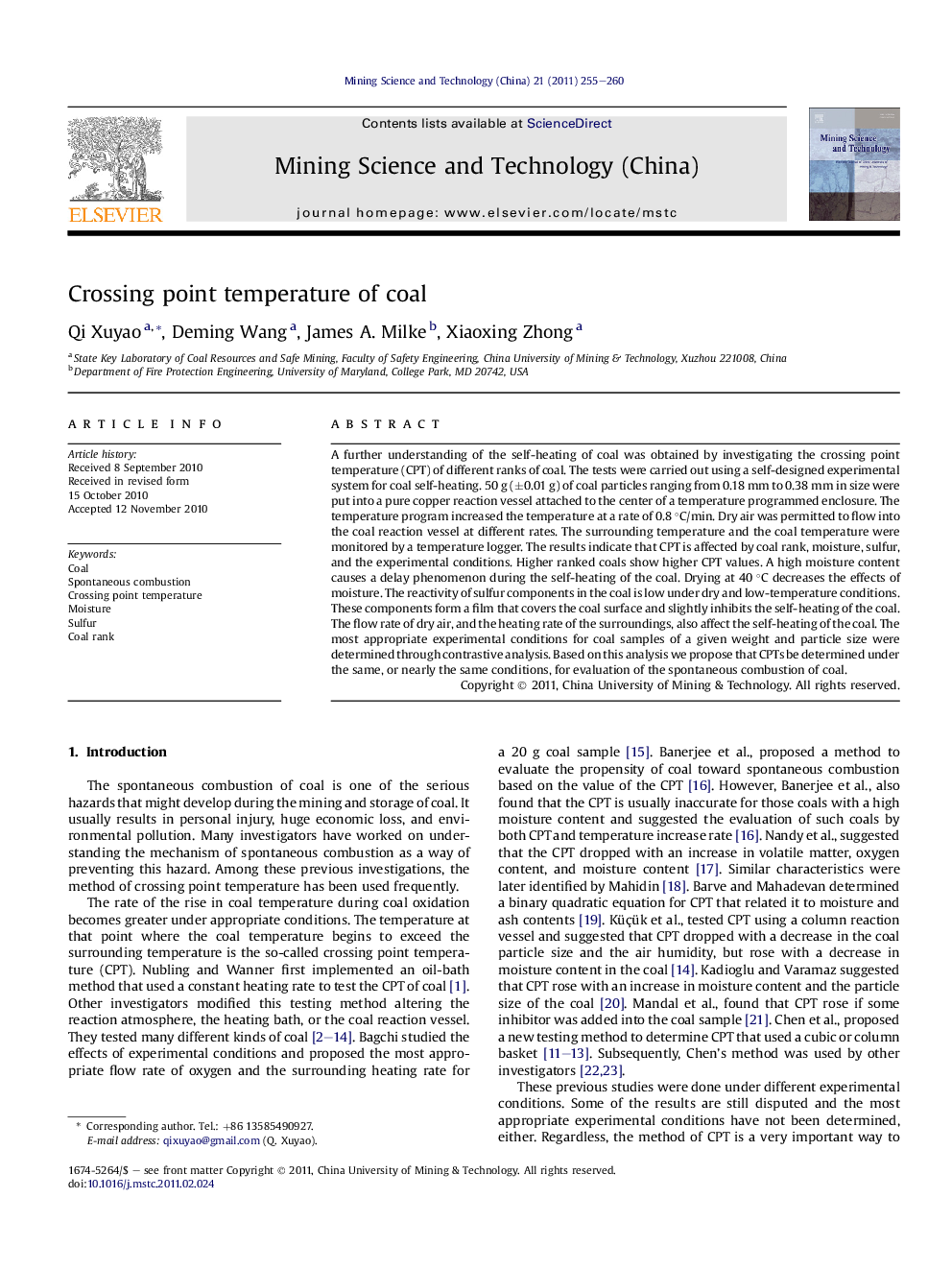| Article ID | Journal | Published Year | Pages | File Type |
|---|---|---|---|---|
| 294492 | Mining Science and Technology (China) | 2011 | 6 Pages |
A further understanding of the self-heating of coal was obtained by investigating the crossing point temperature (CPT) of different ranks of coal. The tests were carried out using a self-designed experimental system for coal self-heating. 50 g (±0.01 g) of coal particles ranging from 0.18 mm to 0.38 mm in size were put into a pure copper reaction vessel attached to the center of a temperature programmed enclosure. The temperature program increased the temperature at a rate of 0.8 °C/min. Dry air was permitted to flow into the coal reaction vessel at different rates. The surrounding temperature and the coal temperature were monitored by a temperature logger. The results indicate that CPT is affected by coal rank, moisture, sulfur, and the experimental conditions. Higher ranked coals show higher CPT values. A high moisture content causes a delay phenomenon during the self-heating of the coal. Drying at 40 °C decreases the effects of moisture. The reactivity of sulfur components in the coal is low under dry and low-temperature conditions. These components form a film that covers the coal surface and slightly inhibits the self-heating of the coal. The flow rate of dry air, and the heating rate of the surroundings, also affect the self-heating of the coal. The most appropriate experimental conditions for coal samples of a given weight and particle size were determined through contrastive analysis. Based on this analysis we propose that CPTs be determined under the same, or nearly the same conditions, for evaluation of the spontaneous combustion of coal.
